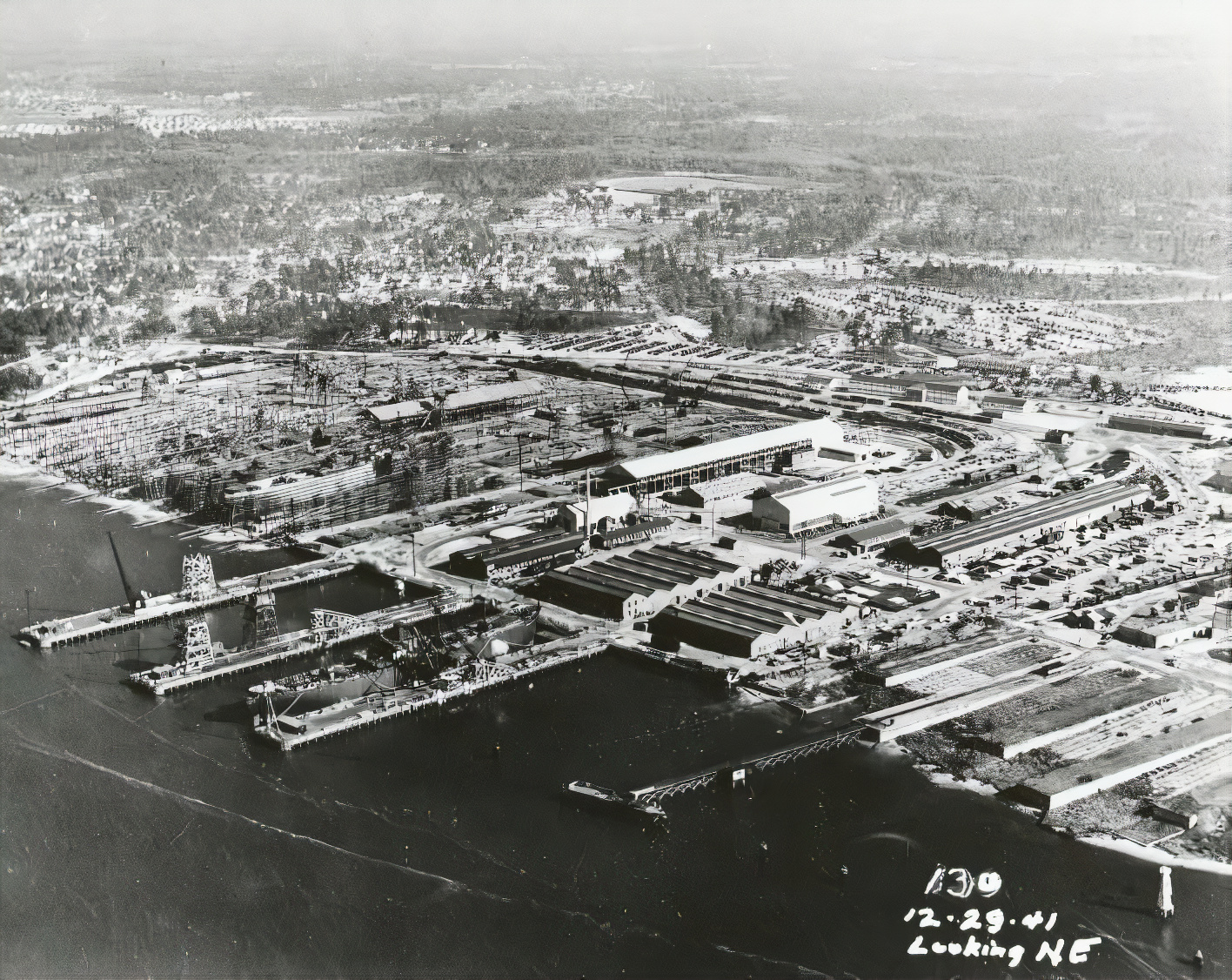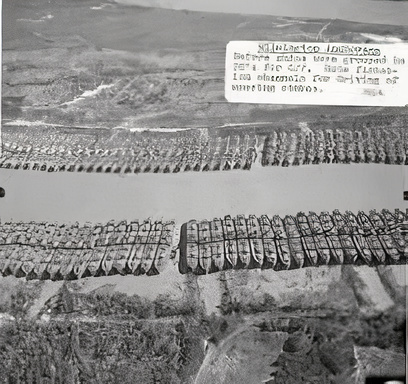The SS Zebulon Baird Vance launched into Cape Fear, December 6, 1941.
—State Archives, North Carolina Office of Archives and History
Shipbuilding
Shipbuilding in the Lower Cape Fear region peaked in the 19th century, and swiftly declined in the early 20th century as construction methods shifted from wood to iron and steel. A number of shipyards were located on Eagles Island, the first of which was Beery’s Shipyard, also known as the Commercial Mill and Shipyard and the Confederate Navy Yard. Opened in 1848 by Samuel Beery and his two sons, this shipyard produced commercial vessels until the Civil War, when it shifted its focus to building ships for the confederate navy. In 1911, Beery’s Shipyard was purchased by Wilmington Iron Works, who established the Wilmington Marine Railway Company in its place. In 1924, Stone Towing Company – formed in 1895 as a towing business and grocer – purchased the Wilmington Marine Railway Company as well as the Naul Shipyard (Diamond Steamboat and Wrecking Company) to the north and operated until 1946 when a fire destroyed most of its facilities. To the south of the Wilmington Marine Railway Company was Hamme Marine Railway, a small railway used to haul vessels for repair. In 1910, the US Army Corps of Engineers constructed wharves and docks for the Government Shipyard and Marine Railway, which continues to operate today as the US Engineer Yard (Markham et al, 2011).
Shipbuilding in the region increased for a short period during WWI and again during WWII, when the North Carolina Shipbuilding Company produced 243 vessels for the war effort through the US Maritime Commission. After the war ended, the decommissioned fleet was sold, scrapped, or stored (“mothballed”) along both sides of the Brunswick River, which was dredged and widened to accommodate the anchorage. By the early 1970s, the entire fleet had been sold or scrapped (Minford, 2012).
Following the Second World War the US Navy & US Martime Administration were faced with a substantial surplus of government-owned cargo ships built during the war and a lack of places to store them after they were deactivated. Starting in 1946 the State of North Carolina and the US Navy began to dredge out and prepare the coastlines of the Brunswick River to serve as the location for a reserve or ‘mothball’ fleet of cargo ships.
Accepting its first deliveries in Autumn 1946 the Wilimington Reserve Fleet eventually became home to over 300 Victory and Liberty ships, many of which were built across the river at the Wilmington Shipyard. When the US Navy consolidated its East Coast Reserve Fleets to Fort Eustis Virginia and Beaumont Texas in the 1960s & 1970s, the ships of the Wilmington Reserve fleet were steadily removed to their new homes, scrapped or used as targets. The Wilmington Reserve Fleet ceased operations in 1962.




